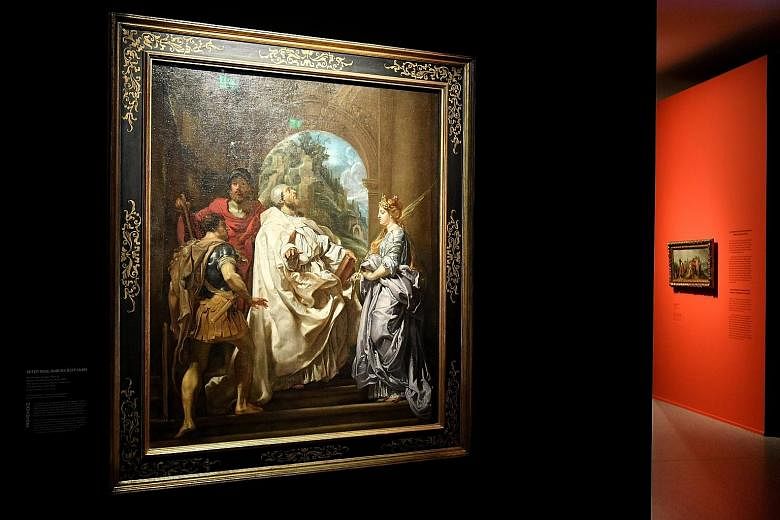NEW YORK • Weeks after a German magazine tipped off the world that an 80-year-old man had hoarded hundreds of artworks collected by his father during the Nazi era in a Munich apartment, the world gasped at the prospect of rediscovering long-lost treasures.
Four years after the discovery of the collection inherited by Cornelius Gurlitt, the public is able for the first time to view 450 of the most valuable works, previously seen only in photographs, in a pair of coordinated exhibitions at the Kunstmuseum Bern in Switzerland and the Bundeskunsthalle in Bonn, Germany.
The parallel shows, running under the title Gurlitt Status Report, allow the public to view works by Monet, Cezanne, Renoir, Otto Dix and other artists found in Gurlitt's apartment and in another home of his in Salzburg, Austria. The collection contains 1,500 items, including paintings, sculptures, sketches and drawings, but also ledgers and other documentation, much of which will not be displayed.
Most of the finest works were acquired by Gurlitt's father, Hildebrand Gurlitt, an art dealer who began working for the Nazis in 1938. His son inherited the collection and kept it in the apartment for decades, until the authorities discovered it as part of an investigation into tax evasion.
The younger Gurlitt died months after the discovery, leaving the collection to the Kunstmuseum Bern. But a distant cousin challenged the will. The dispute left the ownership of the collection in limbo for more than a year, delaying the exhibitions.
Gurlitt Status Report delves into the history behind the collection and the circumstances under which it came together. This includes an exploration of the ambiguities surrounding Gurlitt's father's personal history. He was persecuted as the grandchild of a Jew, but he also became one of only four dealers allowed to sell artworks confiscated by the Nazis.
Also displayed are documents that record the efforts of the two galleries staging the exhibition to establish the original ownership of the works.
Each of the shows focuses on a different aspect of the Third Reich's policies on art. The Bern exhibition, Degenerate Art, Confiscated And Sold, opened last Thursday. Its focus is on works acquired as part of the 1938 law that allowed the Nazis to seize so-called "degenerate" art, mostly modernist pieces viewed by Hitler as un-German or as Jewish.
In Bonn, works in Nazi Art Theft And Its Consequences went on display last Friday. Most of the art in the Bonn show is suspected of having been wrongfully taken by the Nazis from its Jewish owners and the ownership history of many pieces on display is not yet clear.
NYTIMES

